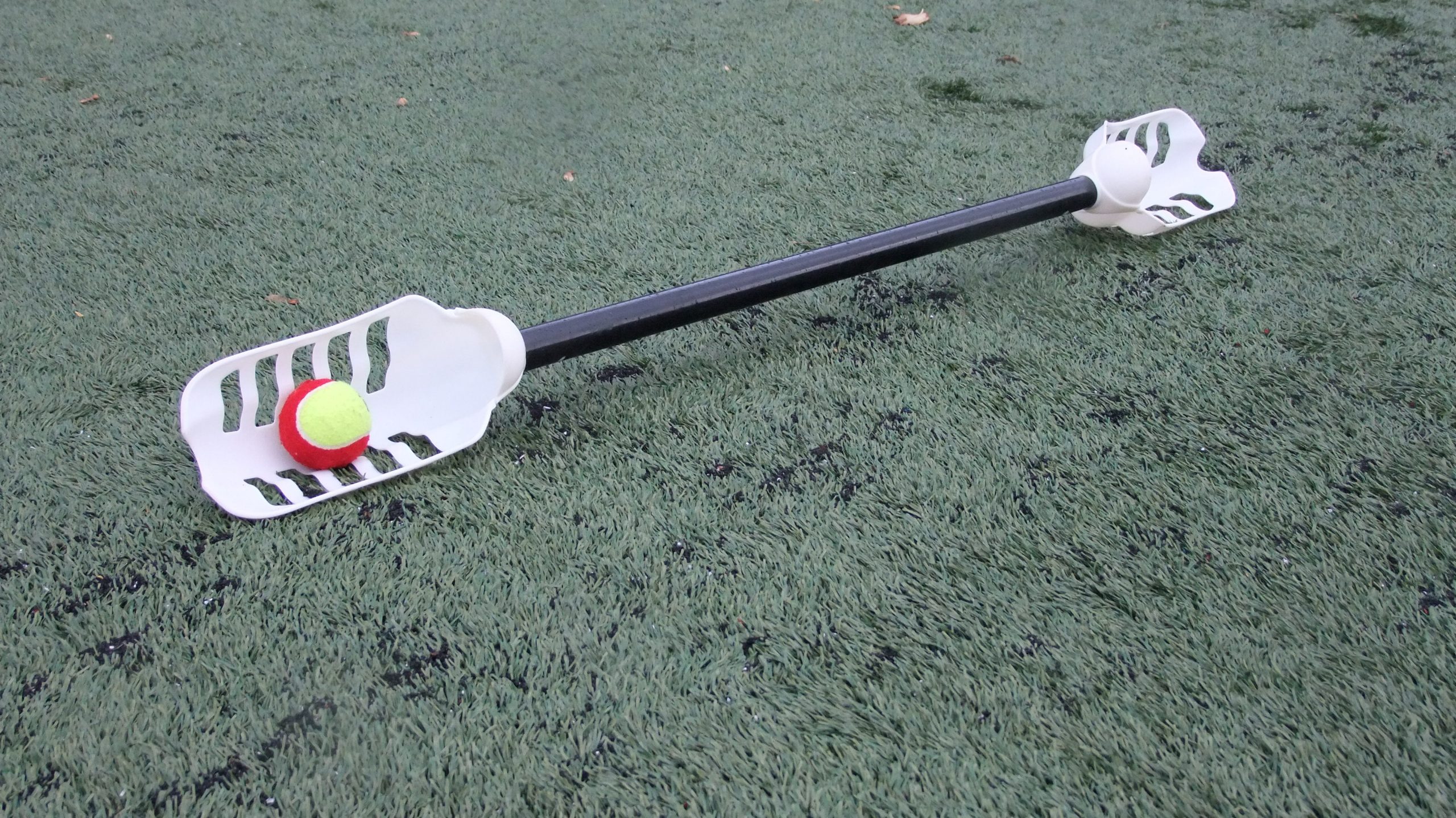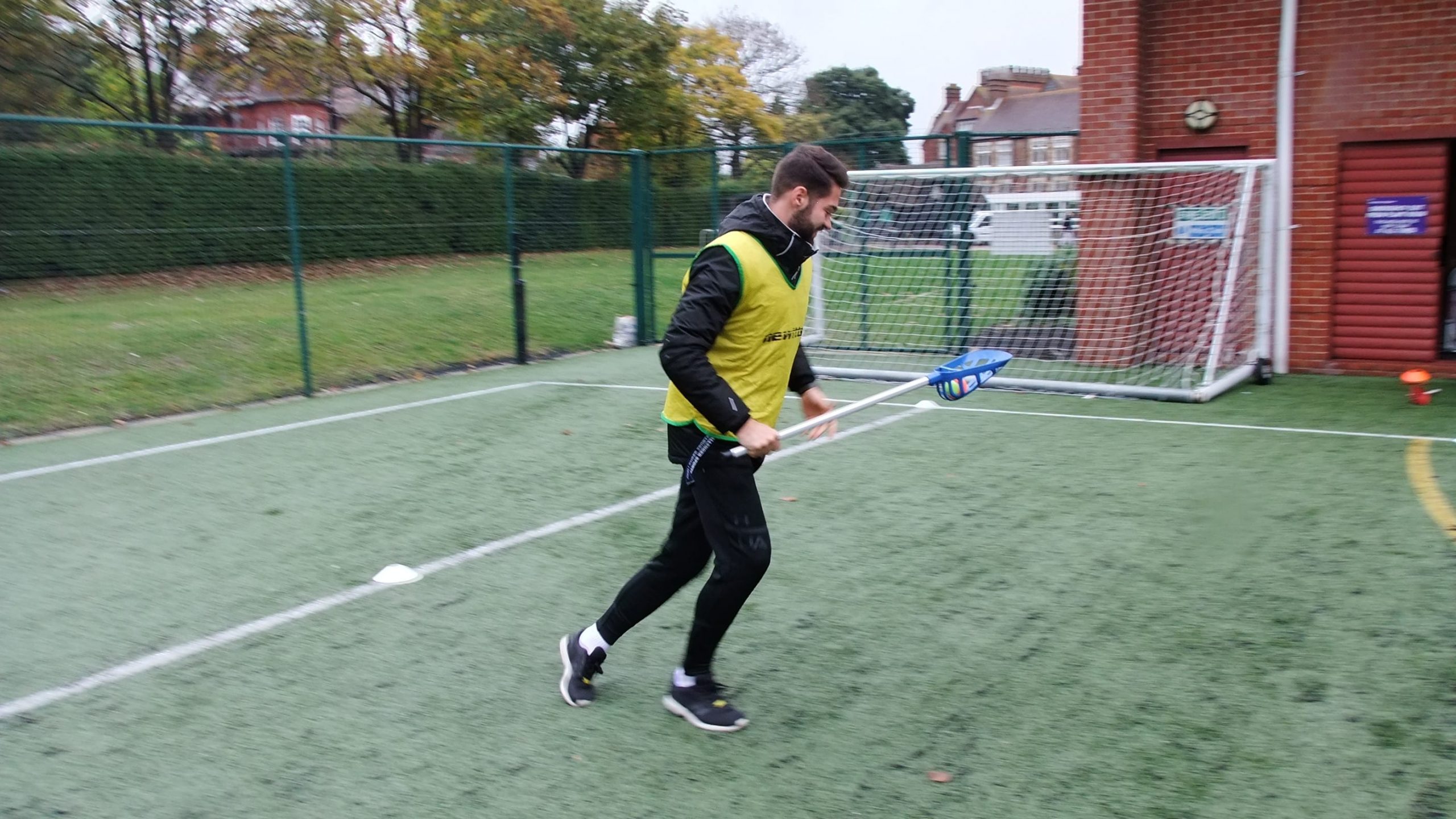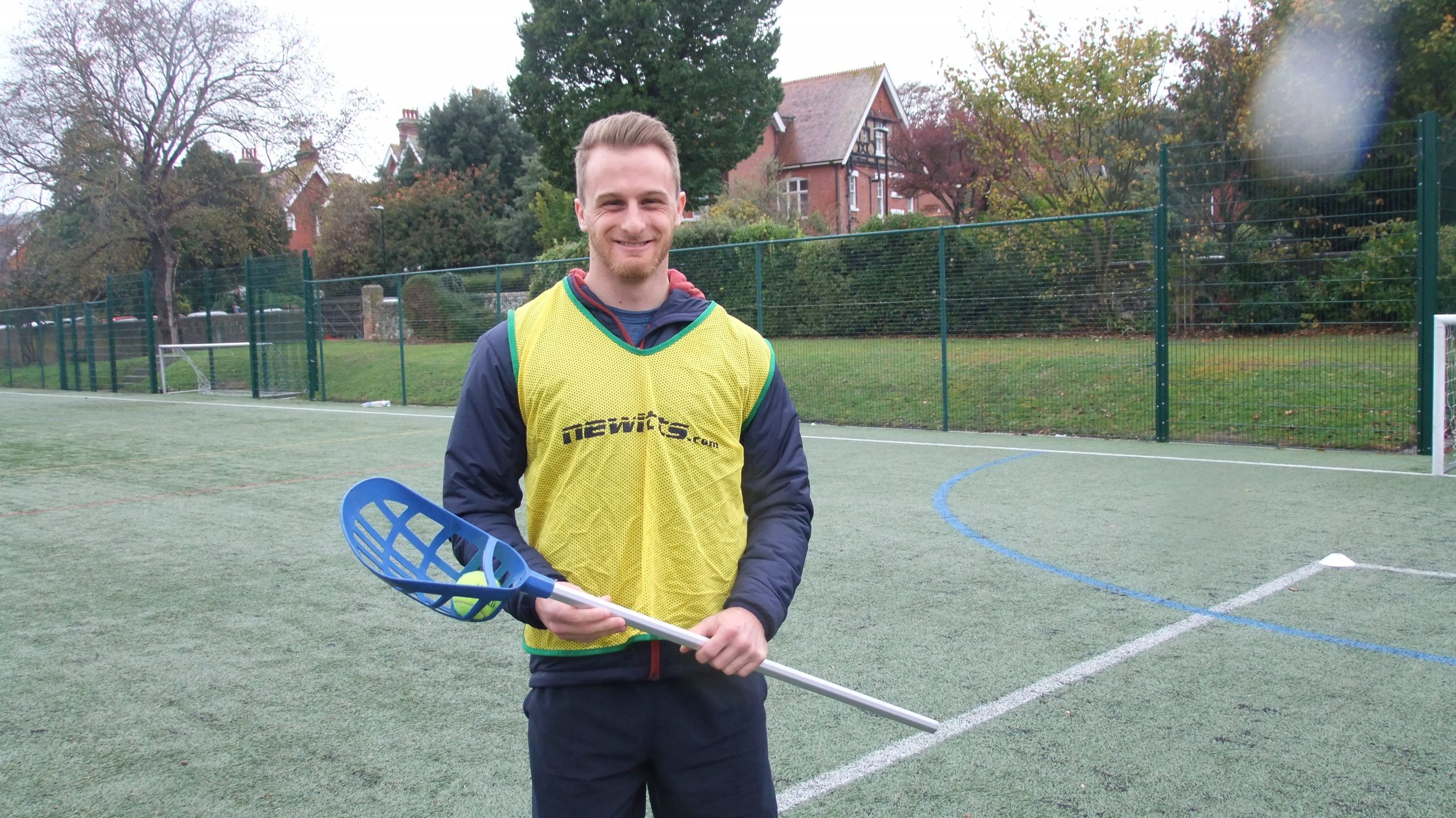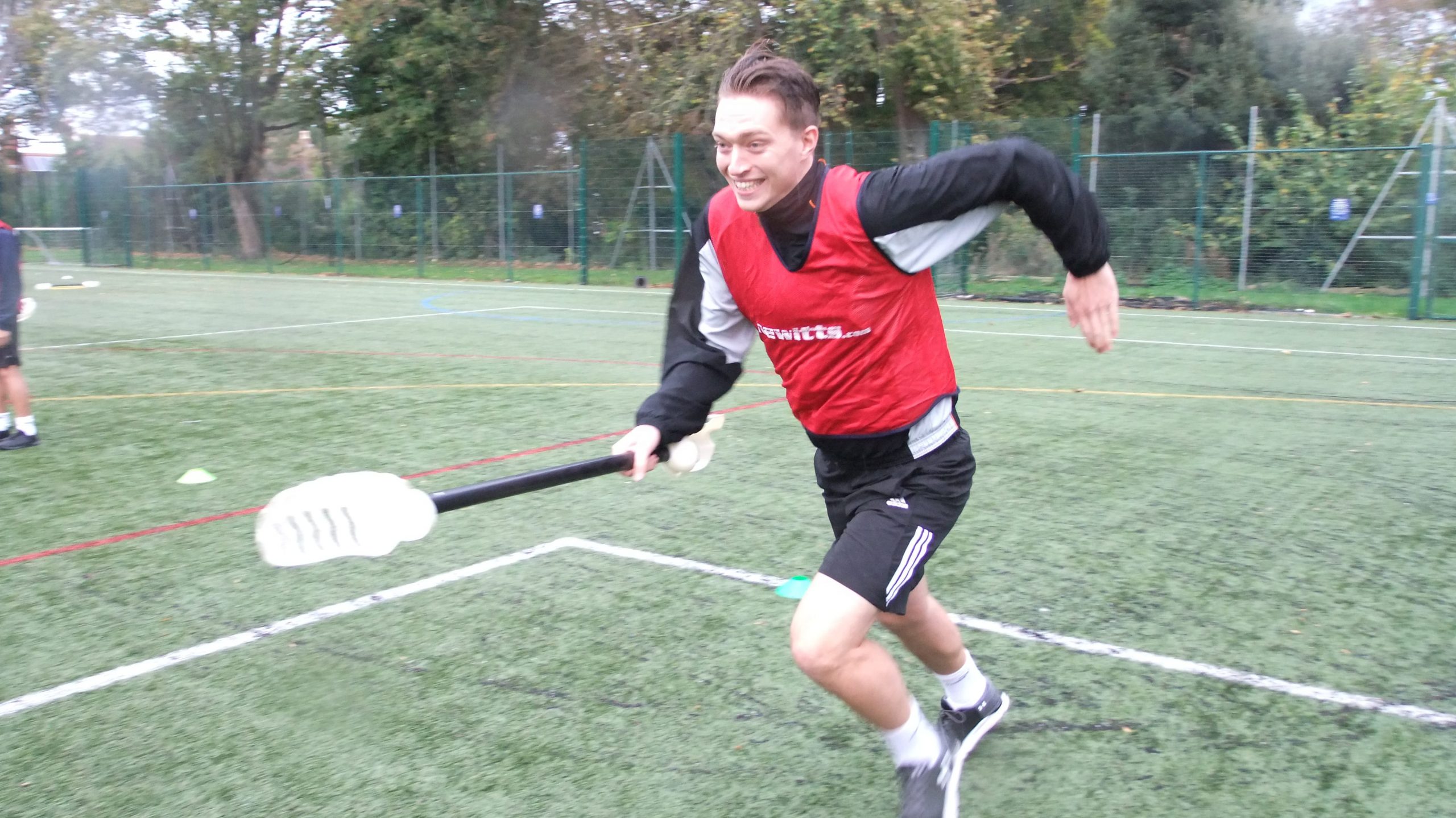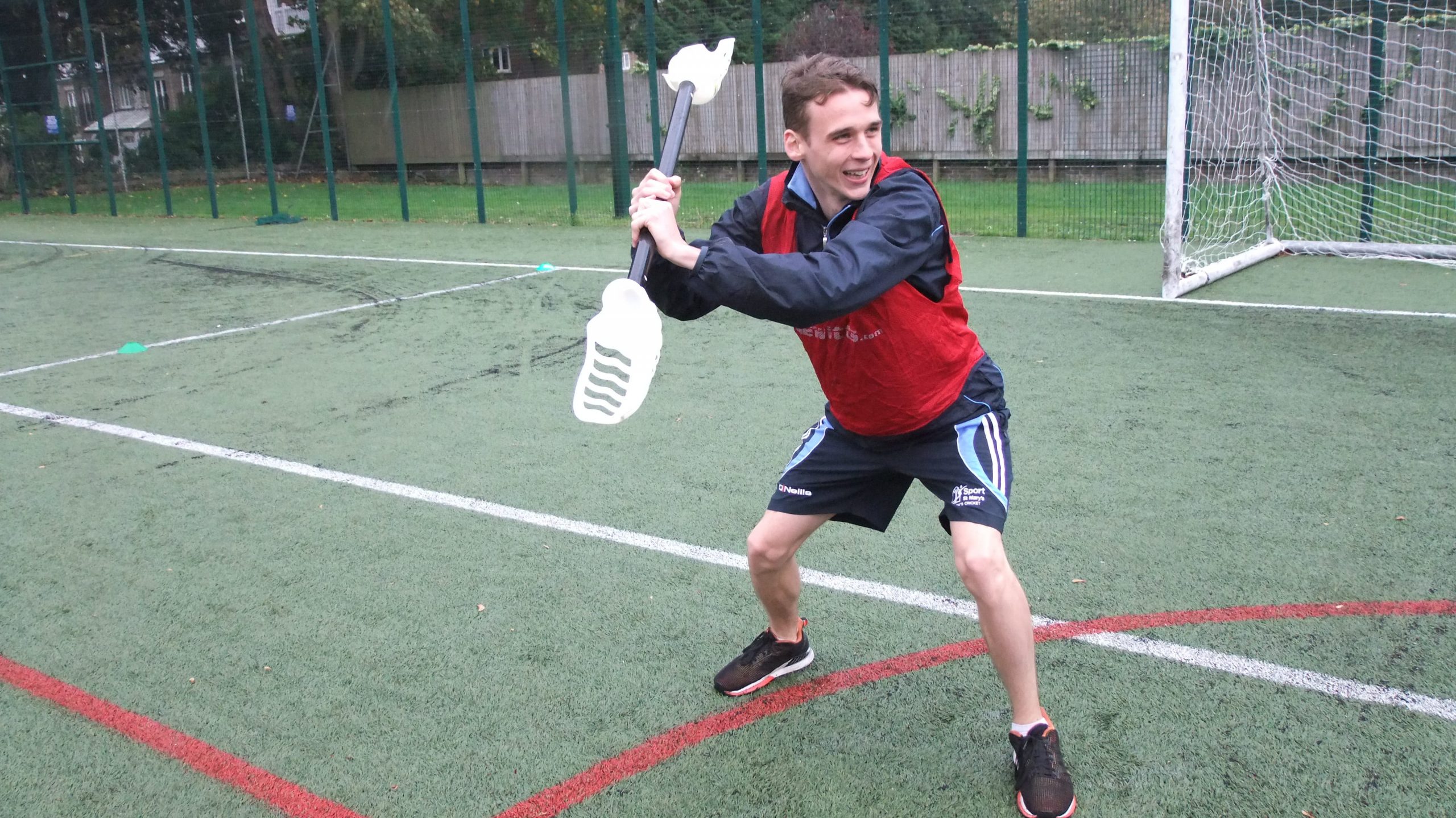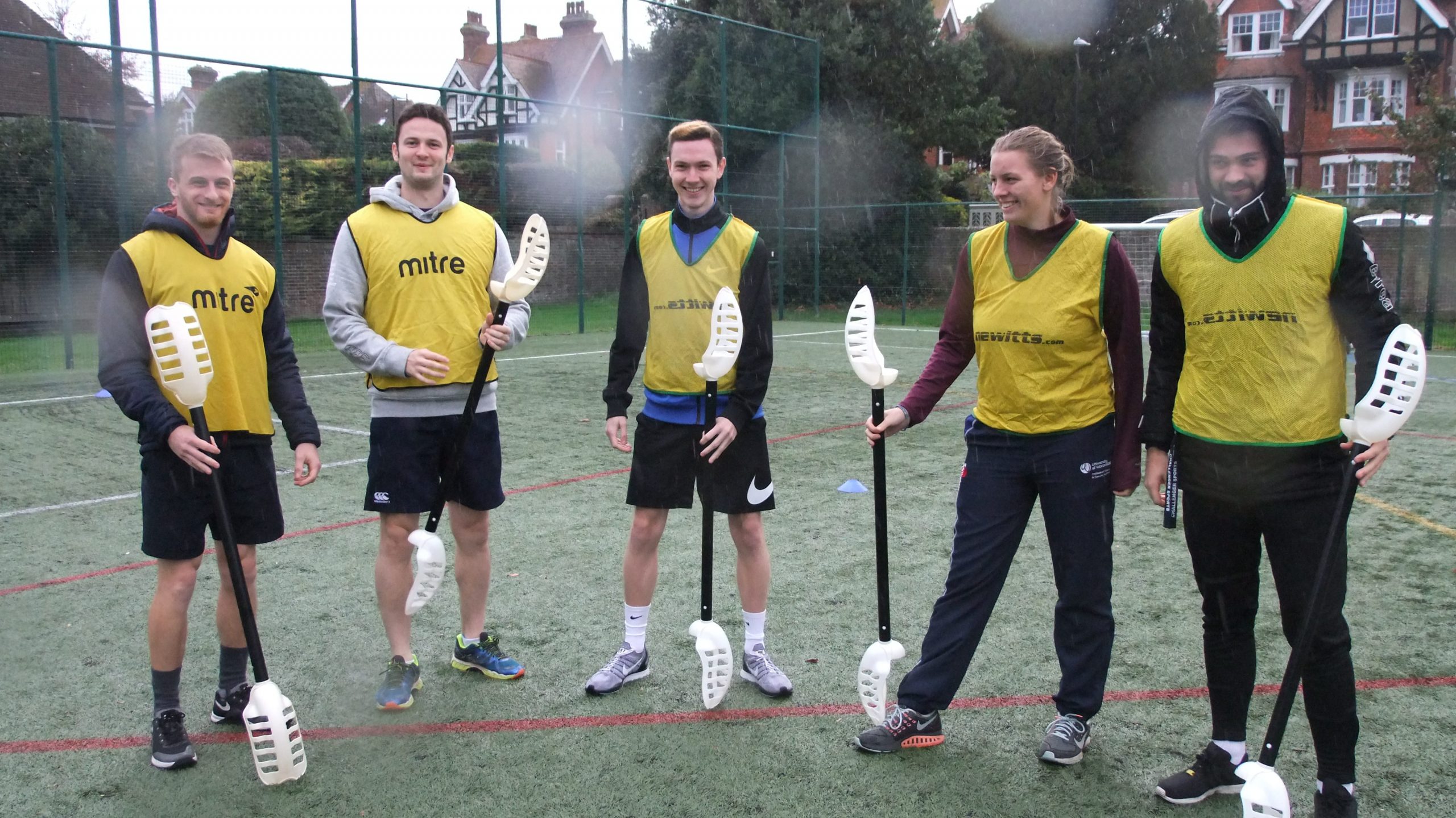
The Hand that rocks the cradle
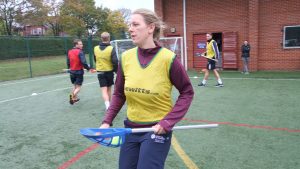 Introducing pop Lacrosse and VX Rock it ball
Introducing pop Lacrosse and VX Rock it ball
Trainee teachers of physical education were introduced to the concept of ‘cradle’ games during a university-based training session. Pop Lacrosse and VX Rockitball were two examples of cradle games where the object is to manipulate a stick and cradle to receive and send a ball quickly or to shoot at a target. Trainees were able to apply the STEP model (space, task, equipment and people) in order to ensure an inclusive approach to pedagogy.
POP Lacrosse is a 5v5 stick and ball invasion game that can be played on a badminton court-sized space or similar, inside or outside. The aim of the game is to score a goal by shooting or rolling a ball into the opponent’s net.
The game normally has five players on the pitch at a time, minimum two of each sex, but can be six if a goalkeeper is used. There is a goal at either end, two metres in from the back line, and each within a two metre radius goal circle.
VX Rockitball is a gender-neutral team game which evolved in North Yorkshire and has elements of several sports including dodgeball, lacrosse and hockey. VX is played by two teams of five players.
Each player uses a VstiX, which is made up of a control bar, and a thrower/catcher at each end. Players are not restricted to a certain area but can go anywhere on court and they must dribble by cradling a low compression ball between the two ends, or by using one end of the VstiX to bounce the ball on the floor.
Five balls are in play with one point scored by hitting an opponent with the ball between the shoulders and the feet, and three points scored by catching an opponent’s thrown ball. When a player is hit they must stand still, raise a hand and look to the referee. The referee records the point and tells the player to play on.
PGCE and School Direct PE route leader, Dr Gary Stidder said: “Cradle games are a great alternative to other forms of invasion games and require very different skills and techniques. If taught correctly they can be extremely inclusive for all pupils of all abilities and provide variation in terms of curriculum content.”



